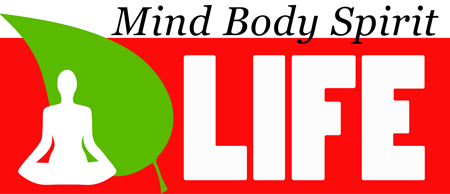High Heat Could Quickly Kill the Coronavirus

There is still much we do not know about the novel coronavirus, COVID-19, but researchers are starting to piece the puzzle together as we go along. For example, a recent Chinese investigation suggests COVID-19 is “highly sensitive” to high temperatures and spreads faster in colder climates; its most rapid spread is occurring at a temperature of 8.72 degrees Celsius.1
The researchers recommend countries with colder climates “adopt the strictest control measures” to limit the spread of the disease. Hassan Zaraket, assistant director of the Centre for Infectious Diseases Research at the American University of Beirut, commented on the preliminary findings to South China Morning Post:2
“As temperatures are warming up, the stability of the virus could decrease … if the weather helps us reduce transmissibility and environmental stability of the virus, then maybe we can break the chain of transmission.”
You don’t have to wait for the arrival of summer, however, to take advantage of the potential benefits of heat. James DiNicolantonio, Pharm.D., a cardiovascular research scientist at Saint Luke’s Mid America Heart Institute, recently highlighted a core mechanism by which your body fights viral infections, namely fever.3
A fever is your body’s way of raising your core body temperature, and most pathogens don’t fare well in high heat. DiNicolantonio argues high heat exposure activates heat shock proteins which may prevent viral nucleoproteins from being exported suppressing viral replication. Thus, sauna therapy may have potential against RNA viruses particularly prior or early on in infection.
Sauna Bathing Lowers Risk of Viral Illness
Ways in which you can acutely and temporarily raise your core body temperature include sauna bathing, taking a steam bath, physical movement to induce sweating, or simply bundling up with warm clothes.4 In a March 16, 2020, Instagram post, DiNicolantonio explainsed:5
“I have been getting a lot of questions about the [Joe Rogan] podcast on coronavirus. A lot of people were disappointed to hear that Michael Osterholm suggested saunas would not work against coronavirus. Michael argued that the lungs wouldn’t get hot enough in a sauna to kill coronavirus.
The problem is that he is looking at this from the WRONG mechanism. Saunas increases CORE BODY TEMPERATURE. Remind me again how our body fights off viruses? That’s right! By raising core body temp-DEVELOPING A FEVER! Why does our own body do this? Because a FEVER HELPS COMBAT VIRUSES.
Saunas, especially infrared saunas, create a ‘pseudo fever’ by raising core body temp. So how do fevers (or saunas) potentially work against viruses? By increasing HEAT SHOCK PROTEINS. So, saunas’ inability to increase the lungs to 180 F is NOT a reason to argue that it won’t help against viral infections.”
I would add that DiNicolantonio’s advice on saunas is spot on, but electromagnetic fields (EMFs) are not his specialty. While infrared (IR) saunas are helpful, one needs to be diligent about the electric and magnetic fields.
While many newer IR saunas have low magnetic fields of about 1 milligauss, many have electric fields far higher than the recommended 30 volts/meter. One that advertises themselves as low EMF I measured at 700 volts/meter. So, do your homework before you use them.Advertisement

Antiviral Effects of Sauna Bathing
A number of studies have investigated the antiviral effects of sauna bathing. For example, a clinical study6 involving 50 volunteers showed regular sauna bathers had half the rate of common cold compared to nonusers.
This makes sense, considering sauna use will kill bacteria, fungi, parasites and viruses and boost your immune function by increasing white blood cell, lymphocyte, neutrophil and basophil counts. As noted by DiNicolantonio,7“prospective studies8 [show] that those who use a sauna ~2-3 times per week have a lower risk of getting colds, influenza and pneumonia.”
He also cites research showing animals placed in a sauna before being injected with influenza virus had dramatically reduced lung pathology and mortality. Viral replication was also suppressed in sauna-exposed animals. A German review of the benefits of sauna bathing further notes (translated to English):9
“Regular visits to the sauna significantly reduce the frequency and severity of influenza infections in children and adults. In athletes (medium-distance runners compared to untrained), the immune system is apparently more stimulable.
In the Second World War, among the Finns, confidence in the effects of saunas went so far that they were used as the main measure for preventing typhoid fever.”
The Benefits of Heat-Shock Proteins
So, to be clear, you do not need to elevate the temperature of your lung tissue to a dangerous 180 degrees Fahrenheit. You simply could not survive that type of exposure.
Like the influenza virus, coronaviruses (as a general group) incubate in your sinuses for about three days10 before moving down into your lungs, and appears to be destroyed by temperatures around 133 degrees F (56 degrees Celsius), which is easily achieved in a sauna.
My sauna actually heats up to 170 degrees F. So, provided the virus has not yet reached your lungs, it’s quite possible that high heat in your nasal passages would destroy it.
As reported by the World Health Organization during the 2003 SARS epidemic,11 “Heat at 56°C kills the SARS coronavirus at around 10,000 units per 15 minutes.” Chances are COVID-19 may be equally susceptible at this temperature.
What’s more, it’s not the heat itself that provides all the benefit. By elevating your core temperature by just a few degrees, your body releases heat shock proteins, and they appear to be part and parcel of how saunas reduce your risk of infectious disease.
According to DiNicolantonio, sauna bathing helps reduce viral illness by increasing heat shock protein 70 (Hsp70) and prostaglandins A1 (PGA1). A 2004 study12 in the Journal of Virology explains how Hsp70 and PGA1 block the replication of influenza viruses.
In summary, viral nucleoproteins are synthesized in the nucleus, forming a special complex that enables their export from the nucleus and allows them to form complete virions (i.e., active, infective viral forms) on the surface of the cell membrane.
In the nucleus, Hsp70 interferes with the formation of that export complex, thereby trapping the viral nucleoproteins inside the nucleus. Since the viral nucleoprotein is trapped inside the nucleus, it doesn’t have the chance to become active and infective.
Sauna bathing has also been shown to improve respiratory function in those with asthma, bronchitis and obstructive pulmonary disease,13,14 and can boost your mood — an added boon if you’re struggling with stress and anxiety.
The mood-lifting effect of saunas has to do with the fact that your body, in response to heat, also produces dynorphin,15 the chemical opposite of endorphins. However, dynorphins sensitize your brain to endorphins, which tends to elevate mood.
If you’ve ever had a sauna, you’re probably familiar with this “mellowing” effect already. Heat shock proteins also trigger mitochondrial biogenesis, thereby supporting your overall health, especially your cardiovascular, cardiac and brain health.16
Quercetin Is a Potent Antiviral
You can also reduce your risk of viral infection by taking some nutritional support. Quercetin, in particular, appears to be useful. As reported by Maclean’s,17 Canadian researchers Michel Chrétien and Majambu Mbikay began investigating quercetin in the aftermath of the SARS epidemic that broke out across 26 countries in 2003.
They discovered a derivative of quercetin provided broad-spectrum protection against a wide range of viruses, including SARS18,19 and Ebola. Chrétien and Mbikay are now starting a clinical trial to evaluate the effectiveness of quercetin against COVID-19.
As noted in a 2016 study20 in the journal Nutrients, quercetin’s mechanisms of action include the inhibition of lipopolysaccharide (LPS)-induced tumor necrosis factor α (TNF-α) production in macrophages.
TNF-α is a cytokine involved in systemic inflammation, secreted by activated macrophages, a type of immune cell that digests foreign substances, microbes and other harmful or damaged components. Quercetin also inhibits the release of proinflammatory cytokines and histamine by modulating calcium influx into the cell.21
According to this paper, quercetin also stabilizes mast cells and has “a direct regulatory effect on basic functional properties of immune cells,” which allows it to inhibit “a huge panoply of molecular targets in the micromolar concentration range, either by down-regulating or suppressing many inflammatory pathways and functions.”22
In summary, quercetin has been found to limit viral illness via three primary mechanisms. First, it inhibits the virus’ ability to infect cells. Second, it inhibits replication of already infected cells, and third, it reduces infected cells’ resistance to treatment with antiviral medication.
Other Potentially Beneficial Nutrients
DiNicolantonio is also the co-author of a recent article23 in Progress in Cardiovascular Diseases, in which he highlights several other supplemental nutrients that could help bolster your immune function and lower your risk of COVID-19 infection. As reported in a February 24, 2020, press release:24,25
“COVID-19 is around 30 to 60 times more lethal than the typical annual flu. Both influenza and coronavirus cause an inflammatory storm in the lungs and it is this inflammatory storm that leads to acute respiratory distress, organ failure, and death.
Certain nutraceuticals may help to reduce the inflammation in the lungs from RNA viruses and others may also help boost type 1 interferon response to these viruses, which is the body’s primary way to help create antiviral antibodies to fight off viral infections.”
Below is a summary of the nutraceuticals recommended. For more complete details about each, see the full-text paper26 published in Progress in Cardiovascular Diseases.
| N-acetylcysteine (NAC) — Encourages glutathione production, thins mucus, lowers your chances of influenza infection and reduces your risk of developing severe bronchitis. |
| Elderberry extract — Known to shorten influenza duration by two to four days and reduce the severity of the flu. According to the authors:27“Given that elderberry is a very rich source of anthocyanins, there is reason to suspect that its impact on viruses might be mediated, at least in part, by ferulic acid, a prominent metabolite that appears in plasma following anthocyanin ingestion.” |
| Spirulina — Reduces severity of influenza infection severity and lowers influenza mortality in animal studies. In a human trial, spirulina significantly lowered the viral load in patients with HIV infection. |
| Beta-glucan — Reduces severity of influenza infection severity and lowers influenza mortality in animal studies. |
| Glucosamine — Upregulates mitochondrial antiviral-signaling protein (MAVS), reduces severity of influenza infection severity and lowers influenza mortality in animal studies. |
| Selenium — “Since selenium is an essential cofactor for certain peroxidases, and selenium deficiency has been endemic in certain regions of China and other parts of the world, insuring adequacy of selenium nutrition might also be appropriate in this context,” McCarty and DiNicolantonio note, adding:28“Selenium deficiency also increases the rate at which viruses can mutate, promoting the evolution of strains that are more pathogenic and capable of evading immune surveillance.” |
| Zinc — Zinc has been shown to inhibit coronavirus in vitro and block coronavirus replication in cell culture.29 In the MedCram video below, Seheult discusses compelling evidence suggesting the malaria drug chloroquine can improve zinc absorption and how this may be useful in the treatment of coronavirus infection. |
| Lipoic acid — Helps boost type 1 interferon response. As explained in a 2014 paper:30“Type I interferons (IFNs) activate intracellular antimicrobial programs and influence the development of innate and adaptive immune responses … (IFNs) are polypeptides that are secreted by infected cells and have three major functions.First, they induce cell-intrinsic antimicrobial states in infected and neighboring cells that limit the spread of infectious agents, particularly viral pathogens. Second, they modulate innate immune responses in a balanced manner that promotes antigen presentation and natural killer cell functions while restraining pro-inflammatory pathways and cytokine production.Third, they activate the adaptive immune system, thus promoting the development of high-affinity antigen-specific T and B cell responses and immunological memory. Type I IFNs are protective in acute viral infections but can have either protective or deleterious roles in bacterial infections and autoimmune diseases.” |
| Sulforaphane — Helps boost type 1 interferon response. |
The provisional daily dosage suggestions listed to help control RNA viruses, including influenza and coronavirus infection, are as follows:31
| Ferulic acid | 500 to 1,000 milligrams (mg) |
| Lipoic acid | 1,200 to 1,800 mg (in place of ferulic acid) |
| Spirulina | 15 grams |
| NAC | 1,200 to 1,800 mg |
| Selenium | 50 to 100 micrograms (mcg) |
| Glucosamine | 3,000 mg or more |
| Zinc | 30 to 50 mg |
| Yeast beta-glucan | 250 to 500 mg |
| Elderberry extract | 600 to 1,500 mg |
Focus on Your Health During This Challenging Time
While the immediate health risk associated with COVID-19 is considered low,32 the media frenzy and global shutdowns of schools, places of work and social venues are feeding and exaggerating people’s fears — in most cases unnecessarily.
If you’re feeling worried or anxious at this time, remember that your immune system is your first line of defense, and there are plenty of ways to bolster your immunity. Panic shopping is not going to eradicate your fears, but taking common-sense precautions might. To learn more follow Dr. DiNicolantonio on Twitter and Instagram @drjamesdinic




